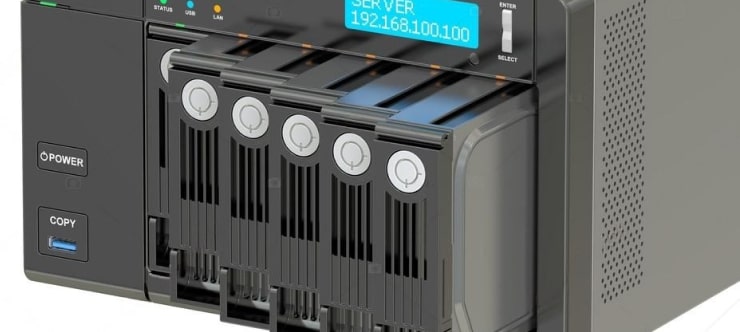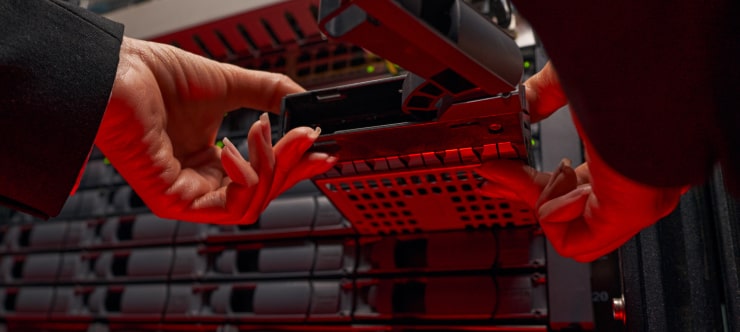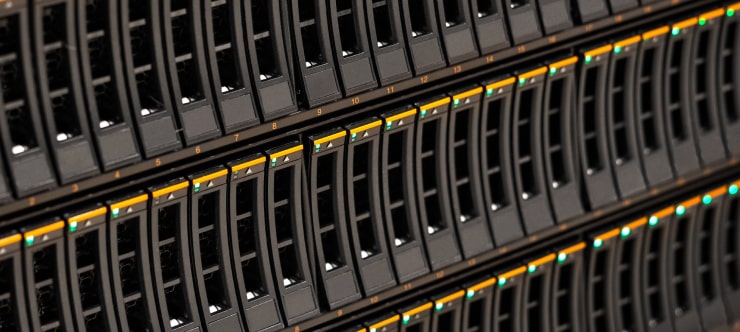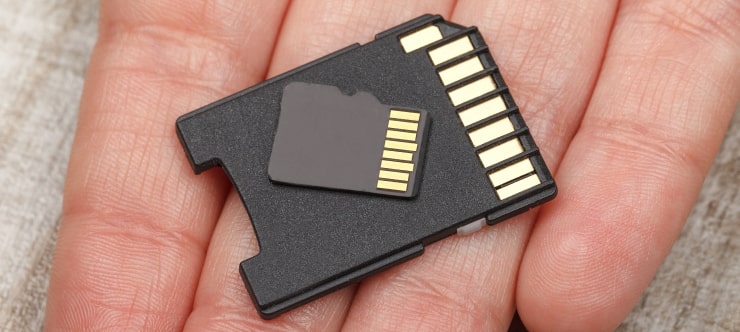Server Crashes: What To Do and What Not To Do

I think there's an issue with my storage device, but I'm not sure
Start a free evaluationServer crashes can have serious consequences if not handled effectively. It is important to take immediate action and inspect each crash so that you can prevent future incidents and minimize their impact on your business or organization.It’s also critical not to try any DIY server fixes. Not only can this cause further damage, but it could also void any server warranties you may have in place.Finally, be sure to back up all server data regularly. This way, if your server does crash unexpectedly, you’ll still have access to essential files and information that can help speed up the recovery process.
What is a server?
A server is a device that provides functionality or services for other programs or devices. Servers can store, process, and manage network data, devices, and systems. It processes requests and delivers data to clients and users in a network.When server crashes occur, it is indispensable to take the necessary steps to address the issue as quickly as possible to minimize the impact.
How can a server crash?
Server crashes can occur for a variety of reasons, including:
- Server overloads
- Hardware failure
- Software errors
- Power outages
- Human errors
- Natural disasters
- Ransomware
When these happen, there will be an interruption to the services provided by the server. Having a disaster recovery plan can prevent losses and downtime, besides having a faster response time.
Signs the server gives before failing
By recognizing the warning signs, you can take steps to prevent a server crash before it occurs.
- Constant warnings or error messages
- Slow server performance or response times
- Unexpected server shutdowns
- Loss of server data or corruption of server files
- Unusual server activity such as high network traffic or CPU usage.

Server crashes: what you can and can’t do
Don't panic. The first thing you should remember when dealing with server crashes is not to panic. Assess the situation calmly, and try to identify the cause of the crash before taking any further action.
Investigate server crashes
When a server crash occurs, it is important to identify and address the root cause of the issue immediately. This could involve checking server logs and backups for errors or irregularities, or running a stress test on the server to identify potential weaknesses or breakdowns in server performance. Also, if you’re getting Blue Screen error messages, you can take the best measure of that error code.
Diagnose server crash
Once you have determined what caused the server crash, diagnose it thoroughly by checking all of your server's hardware and software components, including memory, storage devices, and networking configurations.
Check server logs and backups
After identifying the cause of the crash, check server logs and backups to see if any data has been lost, and make sure the server is properly backed up.
Take corrective action
After diagnosing the server crash and identifying its cause, take immediate corrective action. This could include updating/replacing hardware or software that was causing the crash. However, contacting a data recovery service is the wisest action to take.
Don’t try to fix the server on your own
It’s critical to avoid attempting to fix the server issues without proper knowledge or expertise, as this can do more harm than good. Additionally, it is essential not to restart the server before analyzing what caused the server crash, as this can lead to further damage.
Server Best Practices
Installing a RAID configuration for your server is an essential step to preventing downtime and data loss. Should you start experiencing signs of RAID failure, we highly recommend you contact a certified raid data recovery provider immediately to guide you through damage control and restoring access to your server data.You can further preserve your server and avoid data loss by taking preventive actions and applying best practices such as:
- Monitor server performance regularly
- Establish an established monitoring system for server resources, server performance, and server security
- Ensure all hardware/software components are updated regularly
- Backup server data regularly
- Investigate server crashes thoroughly to identify and address any recurring issues.
How to prevent server crashes?
The best way to prevent server crashes is to follow recommended server maintenance and security measures.Regularly updating server hardware and software, as well as implementing a reliable server backup system, can help ensure server performance remains consistent over time.Pay attention to the server temperature. Overheating indicates something is wrong. Use this sign to investigate and make the upgrade or changes before the server crashes.As well as conducting regular server stress tests can help identify potential weak spots in your server’s architecture or configuration that could lead to future crashes.Finally, make sure you have an established monitoring system for server resources, server performance, and server security so that any issues are identified quickly and addressed before they become major problems.
Summary
You can protect your server by taking a few steps, such as monitoring server resources, performance, and security to identify any potential weak spots before they lead to crashes. Watch out for warning signs such as error messages, slow response times, unexpected shutdowns, data loss or corruption of files, and high network/CPU usage. Take steps to prevent a crash if you recognize these signals.Have a server recovery plan in place to quickly recover any data that might be lost due to a crash. Doing so can help keep your business operations running smoothly and efficiently.NEVER try to fix a server crash on your own.Contact SalvageData 24/7 and build a personalized recovery service for your server.
Related services
These are the most commonly requested data recovery services. At our headquarters' cleanroom lab, our certified engineers conduct a thorough review of any type of physical storage device, determining if there is logical or physical damage and carefully restoring all of the lost files.ces.

External Drive Data Recovery
We recover data from both external SSD and HDD drives. Rely on certified experts to restore your important files from damaged or corrupted external drives.

Hard Drive Data Recovery
Recover data from all brands of HDD, PC hard drives, and hybrid disks. Our specialists ensure fast and secure recovery for any data loss scenario.

NAS Data Recovery
Recover data from NAS devices, including RAID configurations. Our team handles all types of NAS systems and ensures data recovery with minimal downtime.

RAID Data Recovery
Our RAID data recovery services cover RAID 0, 1, 5, 10, and other configurations. We offer expert solutions for failed, degraded, or corrupted RAID arrays.

SAN Data Recovery
Our team specializes in handling SAN devices from leading manufacturers like Dell EMC, HP, and IBM, ensuring efficient recovery with minimal disruption to your operations.

SD Card Data Recovery
Our recovery experts specialize in restoring data from SD and memory cards. We guarantee quick recovery with a no-data, no-charge policy.

SSD Data Recovery
Our data recovery experts handle all SSD data loss scenarios with advanced tools, ensuring maximum recovery with high-security protocols.

USB Flash Drive Data Recovery
Recover lost data from USB flash drives, regardless of the damage or brand. We offer free in-lab evaluations to assess data recovery needs.
If you’re unsure about which data recovery service to choose, let our team assist you in selecting the appropriate solutions. We understand the anxiety that comes with a sudden drive failure, and we are more prompt in our actions compared to other recovery service providers.



